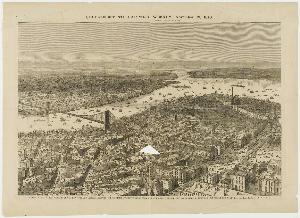Theodore Russell Davis
Theo. Davis;Theodore Russell Davis
Place: Boston
Born: 1840
Death: 1894
Biography:
Theodore Russell Davis was a prominent American artist who made significant contributions to the world of art during his lifetime. Born in Boston, United States in 1840, Davis was known for his eye-witness drawings of major military and political events during the American Civil War and its aftermath.
Early Life and Career
Davis was a member of the Boston Brahmin, a traditional upper-class family in Boston. He was also known as Theo Davis and was considered a White Anglo-Saxon Protestant (WASP). As a young man, Davis developed an interest in art and went on to create numerous drawings and paintings that showcased his talent.
Artistic Contributions
Davis's artwork is characterized by his attention to detail and his ability to capture the essence of significant events. His drawings and paintings are a testament to his skill and craftsmanship. Some of his notable works include The Army of the Potomac–A Sharp-Shooter on Picket Duty, which is now housed at the Smithsonian American Art Museum. This piece showcases Davis's ability to capture the intensity and drama of war. Davis's artwork can also be found in various other museums, including the Museum of Fine Arts in Boston. His contributions to American art are significant, and his work continues to be celebrated by art enthusiasts and historians alike.
Legacy
Theodore Russell Davis's legacy is a testament to his hard work and dedication to his craft. As an artist, he played a significant role in capturing the events of his time, and his artwork continues to be an important part of American history. His contributions to the world of art are a reminder of the significance of American art and its ability to capture the essence of the human experience.
- Visit The Army of the Potomac–A Sharp-Shooter on Picket Duty to learn more about his artwork and contributions to American art.
- Read about the Smithsonian American Art Museum on Wikipedia to gain a deeper understanding of the social context in which Davis lived and worked.
- Explore the Museum of Fine Arts on Wikioo.org to see how other American artists of the time were contributing to the art world.
Theodore Russell Davis's artwork is a significant part of American history, and his contributions to the world of art continue to be celebrated. His ability to capture the essence of major events and his attention to detail have made him a notable figure in the art world. As an American artist, Davis's work is a testament to the power of art to capture the human experience.


